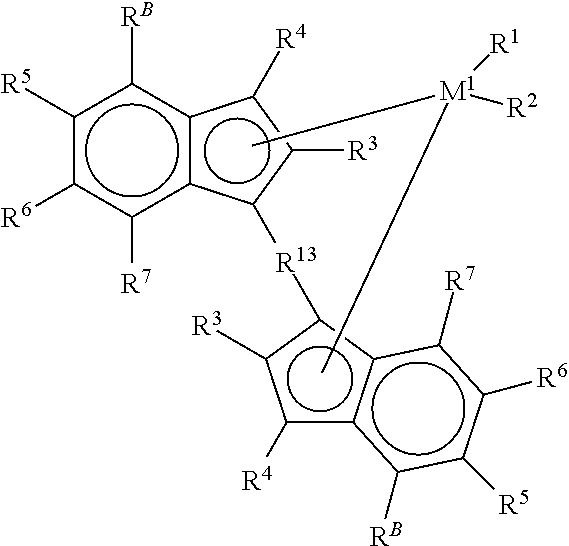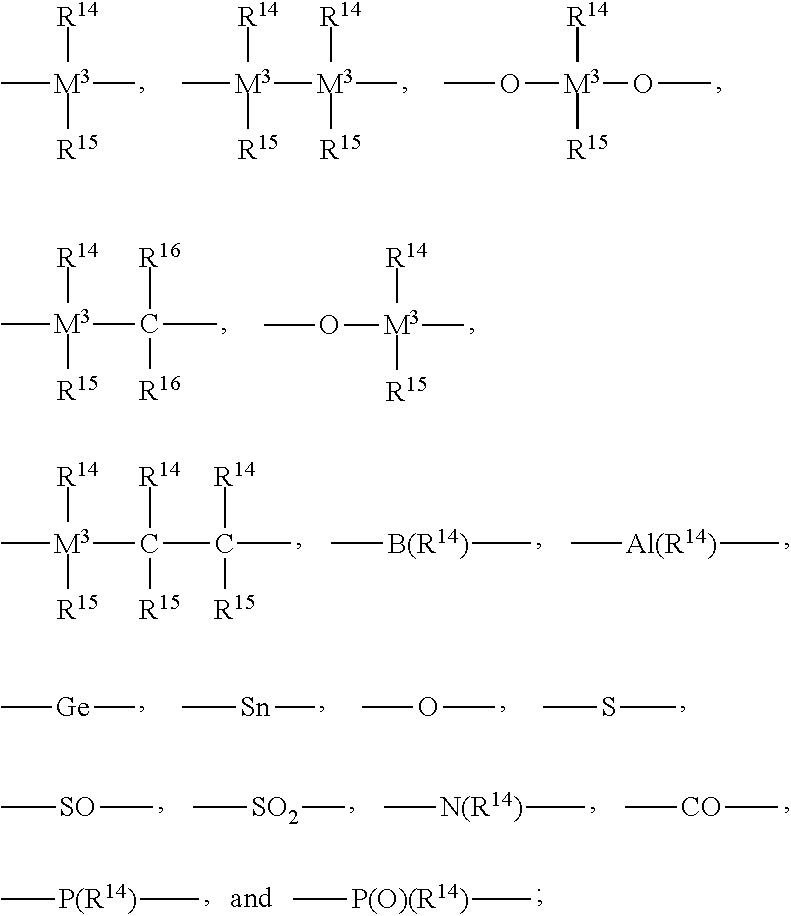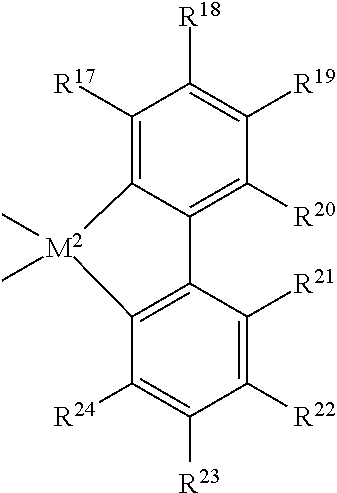Supported Metallocene Catalyst Systems and Methods of Preparation Thereof
a metallocene catalyst and metallocene technology, applied in the direction of catalyst activation/preparation, physical/chemical process catalysts, chemical/physical processes, etc., can solve the problems of significantly less active polymer and lower melting poin
- Summary
- Abstract
- Description
- Claims
- Application Information
AI Technical Summary
Benefits of technology
Problems solved by technology
Method used
Image
Examples
example 1
Synthesis of Supported Metallocene Catalyst Systems A to G
[0314]Trimethyl Aluminum Treated Silica (s-TMAL)
[0315]In a 200 mL flask, 16.3819 g of calcined silica (DAVIDSON™ 948, calcined at 600° C. for 24 hrs) was slurried in toluene and 0.727 g of AlMe3 (TMAL) was added and the slurry heated to 80° C. and stirred. The reaction progress was monitored via 1H NMR by taking aliquots of the solution and checking for the appearance of methyl peaks from excess AlMe3. After 1 hour and 20 minutes, an additional 0.20 g of AlMe3 was added, and the mixture was stirred for another 15 minutes at 80° C. Another 0.636 g of AlMe3 was then added and the mixture was stirred for an additional 30 minutes. Finally, 1.14 g of AlMe3 was then added and the mixture was allowed to stir for 40 minutes, and completion of the reaction was noted via presence of excess AlMe3 in the solution by 1H NMR. The slurry was then filtered and the white solid washed with toluene and allowed to dry overnight, yielding 17.1 g ...
example 2
Polymerizations Using Supported Metallocene Catalyst Systems A to E
[0330]In the following slurry phase examples, pressure is reported in atmospheres and pounds per square inch.
Feed / Solvent Polymerization grade propylene was used and further purified by passing it through a series of columns: 2250 cc column packed with dried 3 Å mole sieves (Aldrich Chemical Company), followed 500 cc column of Almatis AC, Inc. SELEXSORB™ COS (activated alumina beads (7×14 mesh)), followed by 2 500 cc Oxyclear cylinder from Labelear (Oakland, Calif.).
[0331]Polymerization grade hexanes was used and further purified by passing it through a series of columns: 500 cc OXYCLEAR™ cylinder from Labelear (Oakland, Calif.) followed by a 500 cc column packed with dried 3A mole sieves purchased from Aldrich Chemical Company, and a 500 cc column packed with dried 5 Å mole sieves also purchased from Aldrich Chemical Company.
Reactor Description and Preparation
[0332]Polymerizations were conducted in an inert atmosphe...
example 3
Polymerizations Using Supported Metallocene Catalyst Systems E & F
General Description:
[0340]A 1 gram amount of supported metallocene catalyst system was slurried into dry HYDROBRITE™ oil to yield a slurry that contains 5 wt % catalyst. Into a 2 L stainless steel autoclave reactor was added 50 microliters of TNOAL followed by 1250 mls of propylene. The reactor was heated to 70° C. with the stirring rate set at 750 rpm. The supported metallocene catalyst system slurry was then added. The polymerization was allowed to proceed for one hour at which time the reactor was cooled and excess pressure vented. The solid resin was transferred into a glass vessel and dried at 80° C. in a vacuum oven for at least 2 hours. The process conditions, yields and polymer characterization are presented in Table 4, below.
TABLE 4Process Parameters & Polypropylene CharacterizationCatalyst SystemFFEERun Time, min60606060Catalyst Loading, g0.2080.2060.2050.205Yield, g30.442.54867H2, psi4044Tm 2nd melt, ° C.15...
PUM
| Property | Measurement | Unit |
|---|---|---|
| temperature | aaaaa | aaaaa |
| temperature | aaaaa | aaaaa |
| melting points | aaaaa | aaaaa |
Abstract
Description
Claims
Application Information
 Login to View More
Login to View More - R&D
- Intellectual Property
- Life Sciences
- Materials
- Tech Scout
- Unparalleled Data Quality
- Higher Quality Content
- 60% Fewer Hallucinations
Browse by: Latest US Patents, China's latest patents, Technical Efficacy Thesaurus, Application Domain, Technology Topic, Popular Technical Reports.
© 2025 PatSnap. All rights reserved.Legal|Privacy policy|Modern Slavery Act Transparency Statement|Sitemap|About US| Contact US: help@patsnap.com



